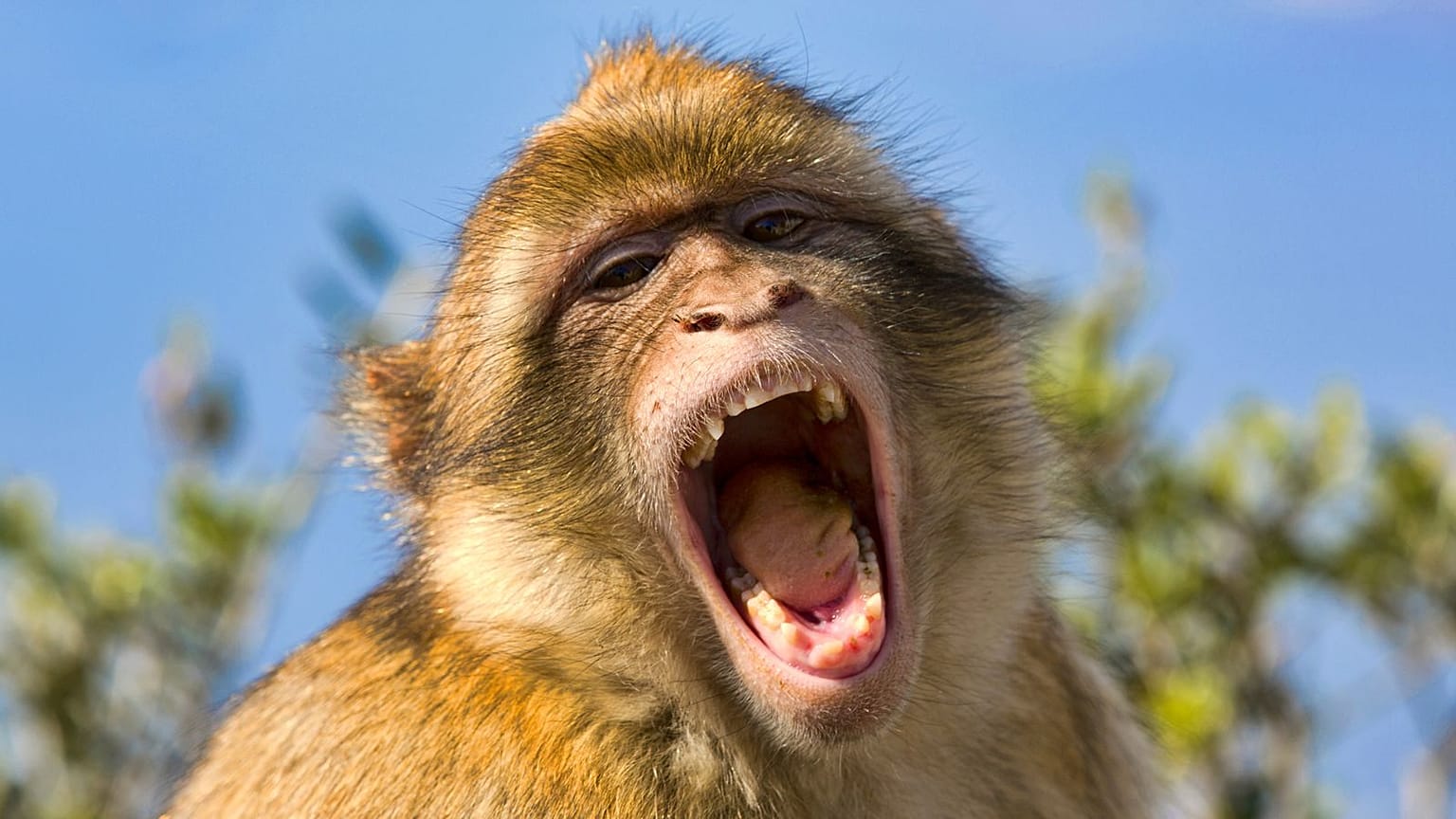A new study suggests that humans are able to speak while monkeys and apes can’t because our vocal anatomy is actually simpler than other primates.
Why did humans evolve to talk, while monkeys were left to hoot, squeak and grunt to communicate?
The question has long puzzled scientists, who blamed our closest primate cousins’ inability to reproduce human speech sounds on their vocal anatomy.
Until now, researchers could not quite underpin what happened exactly during our evolution to make us able to speak while apes and monkeys can’t, given our vocal structures look almost identical to other primates.
Now, a new study published on Thursday in the journal Science claims to have the answer - and it’s not what anyone expected.
Analysing the phonal apparatus - the larynx - of 43 species of primates, a team of researchers based mainly in Japan found that all non-human primates - from orangutans to chimpanzees - had an additional feature in their throat that humans do not have.
Ability to speak and develop languages
While both humans and non-human primates produce sounds by forcing air through their larynges, causing folds of tissue to vibrate, monkeys and apes have an additional feature, a thin flap of tissue known as vocal membranes, or vocal lips.
Compared to apes and monkeys, humans were found to lack this anatomical vocal membrane - a small muscle just above the vocal cords - as well as balloon-like laryngeal structures called air sacs which apes and monkeys use to produce the loud calls and screams we’re not quite capable of.
According to the researchers, humans have lost this extra vocal tissue over time, somehow simplifying and stabilising the sounds coming out of our throat, and allowing us, in time, to develop the ability to speak - and eventually develop very complex sophisticated languages.
Monkeys and apes, on the other hand, maintained these vocal lips which don’t really allow them to control the inflection and register of their voice and produce stable, clear vocal fold vibrations.
“Paradoxically, the increased complexity of human spoken language thus followed simplification of our laryngeal anatomy,” says the study.
Communication through sign language
It’s unclear when humans lost these extra tissues still present in apes and monkeys and became able to speak, as the soft tissues in the larynx are not preserved in fossils, and researchers could only study living species.
We know that it must have happened sometime after the Homo Sapiens lineage split from the other primates, some 6-7 million years ago.
The fact that apes and monkeys haven’t developed the ability to speak like humans doesn’t mean that they are not able to clearly communicate with each other.
Though their vocal anatomy doesn’t allow them to form vowel sounds and proper words, non-human primates have a complex communication system based primarily on body language rather than oral sounds.
But monkeys and apes have also proven to be able to communicate with humans.
In the not-often-happy history of the interaction between non-human primates and humans, researchers have been able to teach apes and monkeys to communicate with people.
Koko the gorilla, for example, became famous for being able to use over 1,000 hand signs in sign language, while the bonobo Kanzi was reportedly able to communicate using a keyboard.
But when it comes to having a chat, monkeys and humans might never be able to share one.


















